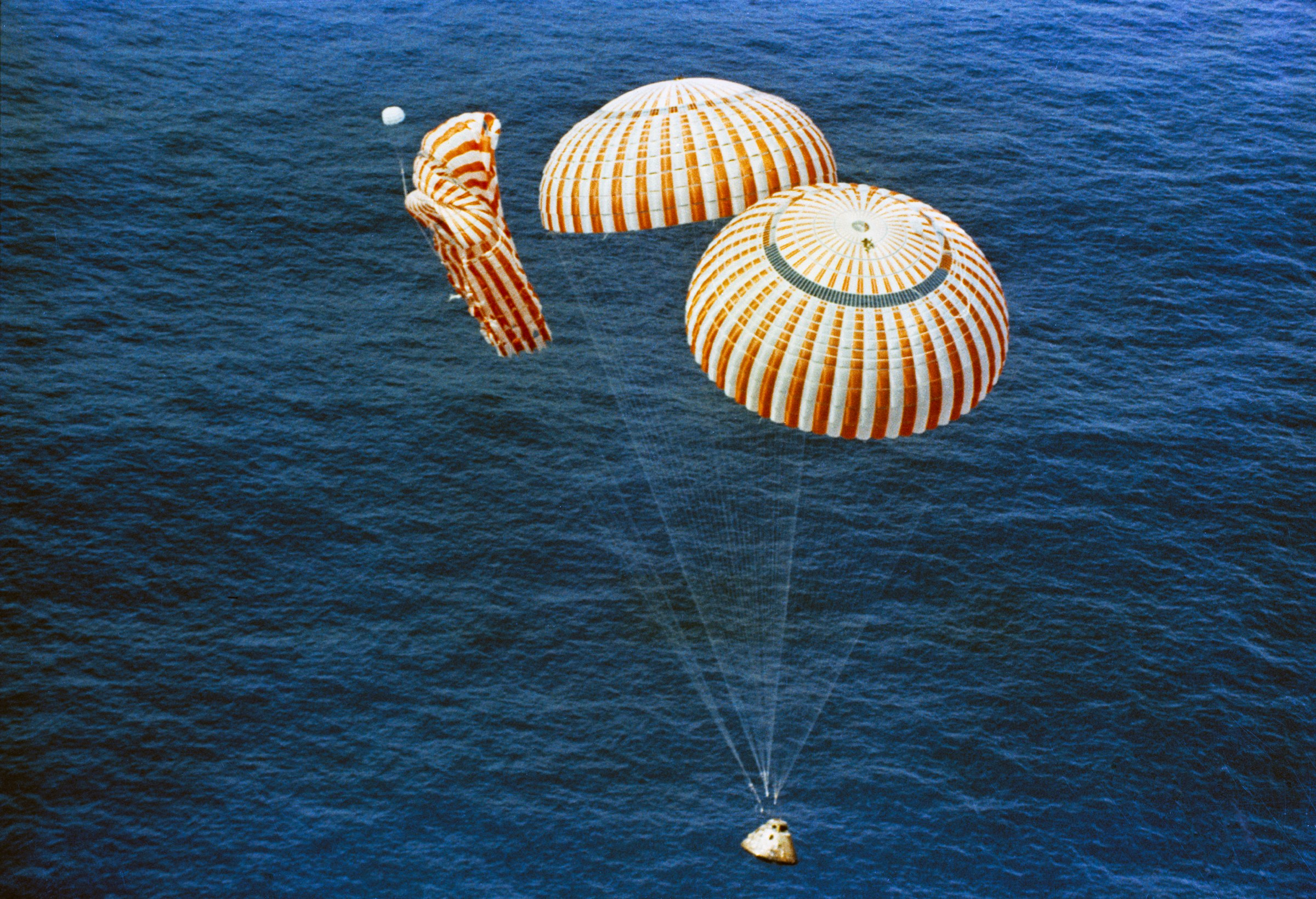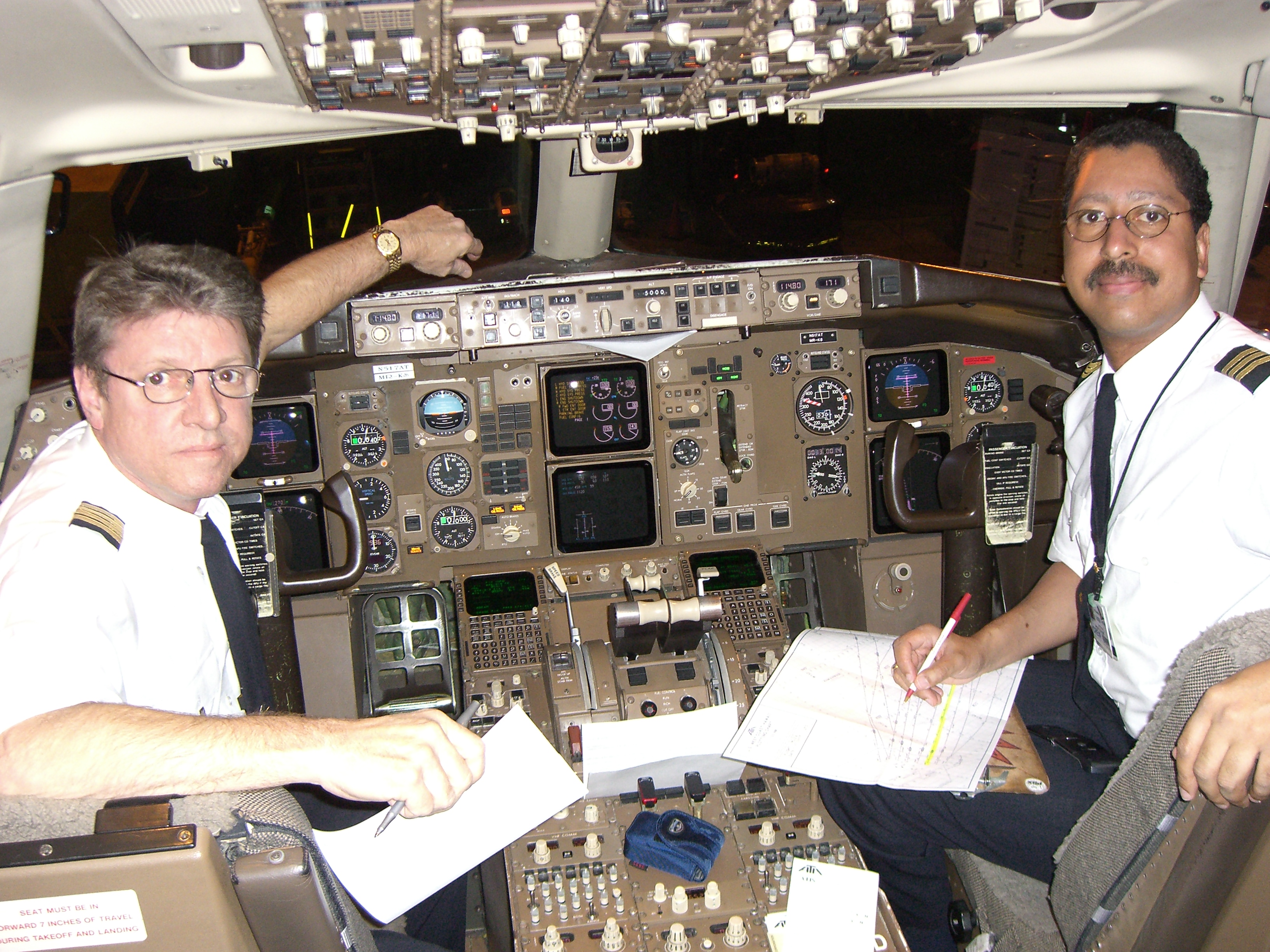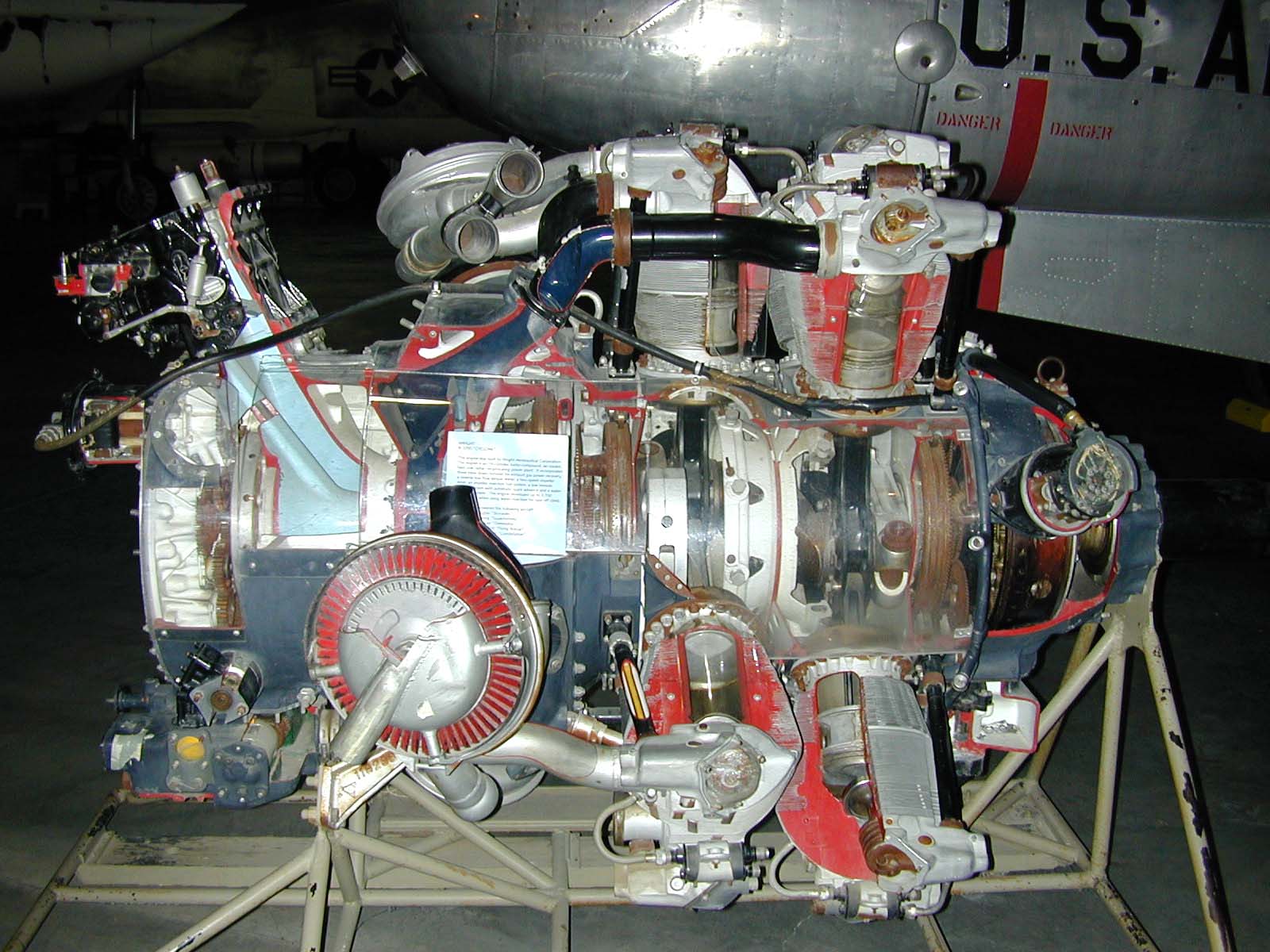|
Flying Tiger Line Flight 923
Flying Tiger Line Flight 923 was a chartered military transport flight that ditched in the North Atlantic Ocean on September 23, 1962. The Lockheed Constellation L-1049H was transporting 68 military personnel of the United States Army from McGuire Air Force Base in New Jersey to Rhein-Main Air Base in West Germany. While flying over the North Atlantic on the Gander-Frankfurt leg, the number 3 engine fire warning sounded, and the engine was shut down. While trying to finish the engine shutdown checklist, the flight engineer accidentally turned off the oil flow to the number 1 engine, leaving the aircraft on only two engines. Approximately an hour later and after the L-1049H started to divert to Shannon, Ireland, the number 2 engine caught on fire and was forced to be at reduced thrust. The aircraft ditched in the North Atlantic Ocean, where 48 occupants survived for six hours on a life raft until the MS ''Celerina'' arrived at the scene. Background Aircraft The aircraft invo ... [...More Info...] [...Related Items...] OR: [Wikipedia] [Google] [Baidu] |
Ditching
In aviation, a water landing is, in the broadest sense, an aircraft landing on a body of water. Seaplanes, such as floatplanes and flying boats, land on water as a normal operation. Ditching is a controlled emergency landing on the water surface in an aircraft not designed for the purpose, and it is a very rare occurrence. Controlled flight into the surface and uncontrolled flight ending in a body of water (including a runway excursion into water) are generally not considered water landings or ditching, but are considered accidents. Most times, ditching results in aircraft structural failure. Aircraft water landings By design Seaplanes, flying boats, and amphibious aircraft are designed to take off and alight on water. Alighting can be supported by a hull-shaped fuselage and/or pontoons. The availability of a long effective runway was historically important on lifting size restrictions on aircraft, and their freedom from constructed strips remains useful for transportatio ... [...More Info...] [...Related Items...] OR: [Wikipedia] [Google] [Baidu] |
Shannon, County Clare
Shannon () or Shannon Town (), named after the river near which it stands, is a town in County Clare, Ireland. It was given town status on 1 January 1982. The town is located just off the N19 road, a spur of the N18/M18 road between Limerick and Ennis. It is the location of Shannon Airport, an international airport serving the Clare/Limerick region in the west of Ireland, as well as being the location of one of the two bases of Shanwick Oceanic Control which oversees transatlantic air traffic control over the western portion of the North Atlantic Ocean. It has a population of 10,256 as per the 2022 census, the second largest town in the county. History Shannon is a new town. Spearheaded by Brendan O'Regan, it was built in the 1960s on reclaimed marshland alongside Shannon Airport, along with the Shannon Free Zone Industrial park. The residential areas were intended as a home for the thousands of workers at the airport, surrounding industries and support services. Popu ... [...More Info...] [...Related Items...] OR: [Wikipedia] [Google] [Baidu] |
Aviation Accidents And Incidents In 1962
Aviation includes the activities surrounding mechanical flight and the aircraft industry. ''Aircraft'' include fixed-wing and rotary-wing types, morphable wings, wing-less lifting bodies, as well as lighter-than-air aircraft such as hot air balloons and airships. Aviation began in the 18th century with the development of the hot air balloon, an apparatus capable of atmospheric displacement through buoyancy. Clément Ader built the "Ader Éole" in France and made an uncontrolled, powered hop in 1890. This was the first powered aircraft, although it did not achieve controlled flight. Some of the most significant advancements in aviation technology came with the controlled gliding flying of Otto Lilienthal in 1896. A major leap followed with the construction of the ''Wright Flyer'', the first powered airplane by the Wright brothers in the early 1900s. Since that time, aviation has been technologically revolutionized by the introduction of the jet engine which enabled aviation ... [...More Info...] [...Related Items...] OR: [Wikipedia] [Google] [Baidu] |
Douglas DC-7
The Douglas DC-7 is a retired American transport aircraft built by the Douglas Aircraft Company from 1953 to 1958. A derivative of the DC-6, it was the last major piston engine-powered transport made by Douglas, being developed shortly after the earliest jet airliner—the de Havilland Comet—entered service and only a few years before the jet-powered Douglas DC-8 first flew in 1958. Larger numbers of both DC-7B and DC-7C variants were also built. Unlike other far more successful propeller-driven Douglas aircraft, such as the DC-3 and DC-6, no examples of the DC-7 remain in service as of 2020. Design and development In 1945, Pan American World Airways requested a DC-7, a civil version of the Douglas C-74 Globemaster military transport. Pan Am soon canceled their order. That proposed DC-7 was unrelated to the later DC-6-derived airliner. American Airlines revived the designation when they requested an aircraft that could fly across the United States coast-to-coast non-stop ... [...More Info...] [...Related Items...] OR: [Wikipedia] [Google] [Baidu] |
Civil Aeronautics Board
The Civil Aeronautics Board (CAB) was an agency of the federal government of the United States, formed in 1940 from a split of the Civil Aeronautics Authority and abolished in 1985, that regulated aviation services (including scheduled passenger airline serviceStringer, David H."Non-Skeds: The Story of America's Supplemental Airlines, Part 1: Industry in the United States," '' AAHS Journal'', vol. 64, no.4 (Winter 2019) journal of the American Aviation Historical Society, excerpt online, retrieved April 8, 2020) and, until the establishment of the National Transportation Safety Board in 1967, conducted air accident investigations. The agency was headquartered in Washington, D.C. Powers The authority of the Civil Aeronautics Board to regulate airlines was established by the Civil Aeronautics Act of 1938. The 1938 Act was amended by the Federal Aviation Act of 1958, but the main effect of that was to establish the Federal Aviation Agency (FAA), which among other things regul ... [...More Info...] [...Related Items...] OR: [Wikipedia] [Google] [Baidu] |
Navigator
A navigator is the person on board a ship or aircraft responsible for its navigation.Grierson, MikeAviation History—Demise of the Flight Navigator FrancoFlyers.org website, October 14, 2008. Retrieved August 31, 2014. The navigator's primary responsibility is to be aware of ship or aircraft position at all times. Responsibilities include planning the journey, advising the Captain (nautical), ship's captain or aircraft commander of estimated timing to destinations while en route, and ensuring hazards are avoided. The navigator is in charge of maintaining the aircraft or ship's nautical charts, nautical publications, and navigational equipment, and they generally have responsibility for meteorological equipment and communications. With the advent of satellite navigation, the effort required to accurately determine one's position has decreased by orders of magnitude, so the entire field has experienced a revolutionary transition since the 1990s with traditional navigation ta ... [...More Info...] [...Related Items...] OR: [Wikipedia] [Google] [Baidu] |
First Officer (aviation)
In aviation, the first officer (FO), also called co-pilot, is a Aircraft pilot, pilot in addition to the Pilot in command, captain, who is the legal commander. In the event of incapacitation of the captain, the first officer will assume command of the aircraft. Requirement Historically, large aircraft had several personnel on the flight deck, such as a Air navigator, navigator, a flight engineer, and a dedicated radio operator. Improvements in automation and reliability have reduced this to two. Many aircraft require a minimum of two flight crew. The minimum crew requirement will be stated in the aircraft manuals by the manufacturer. In the European Union, all turbo-propeller aeroplanes with a maximum approved passenger seating configuration of more than nine and all turbo-jet aeroplanes require two pilots.EU OPS (965) Subpart N, Ops 1.940 Composition of flight crew Role Control of the aircraft is normally shared equally between the first officer and the captain, with one pilot ... [...More Info...] [...Related Items...] OR: [Wikipedia] [Google] [Baidu] |
Flight Time
Flight time or block time is an aviation term referring to the total amount of time spent piloting aircraft, and serves as the primary measure of a pilot's experience. Flight time is defined by International Civil Aviation Organization (ICAO) as "The total time from the moment an aeroplane first moves for the purpose of taking off until the moment it finally comes to rest at the end of the flight", and thus includes time spent taxiing and performing pre-flight checks on the ground, provided the engine is running. It is colloquially referred to as "blocks to blocks" or "chocks to chocks" time. In commercial aviation, this means the time from pushing back at the departure gate to arriving at the destination gate. Air time is defined as "the time from the moment an aircraft leaves the surface until it comes into contact with the surface at the next point of landing". For gliders without self-launch capability, flight time "commences when the glider is towed for the purpose of flig ... [...More Info...] [...Related Items...] OR: [Wikipedia] [Google] [Baidu] |
Pilot In Command
The pilot in command (PIC) of an aircraft is the person aboard an aircraft who is ultimately responsible for its operation and safety during flight. This would be the captain in a typical two- or three- pilot aircrew, or "pilot" if there is only one certificated and qualified pilot at the controls of an aircraft. The PIC must be legally certificated (or otherwise authorized) to operate the aircraft for the specific flight and flight conditions, but need not be actually manipulating the controls at any given moment. The PIC is the person legally in charge of the aircraft and its flight safety and operation, and would normally be the primary person liable for an infraction of any flight rule. The strict legal definition of PIC may vary slightly from country to country. The International Civil Aviation Organization (ICAO) definition is: "The pilot responsible for the operation and safety of the aircraft during flight time." In Annex 2, "Rules of the Air", under par. "2.3.1 Responsi ... [...More Info...] [...Related Items...] OR: [Wikipedia] [Google] [Baidu] |
Wright R-3350 Duplex-Cyclone
The Wright R-3350 Duplex-Cyclone is an American twin-row, supercharged, air-cooled, radial aircraft engine with 18 cylinders displacing nearly . Power ranged from , depending on model. Developed before World War II, the R-3350's design required a long time to mature, and was still experiencing problems with reliability when used to power the Boeing B-29 Superfortress. After the war, the engine had matured sufficiently to be used in many civilian airliners, notably in its turbo-compound forms, and was used in the Lockheed L-1049 Super Constellation airliners into the 1950s. Its main rival was the , Pratt & Whitney R-4360 Wasp Major, which first ran some seven years after the Duplex-Cyclone. The engine is commonly used on Hawker Sea Fury and Grumman F8F Bearcat Unlimited Class Racers at the Reno Air Races. Design and development In 1927, Wright Aeronautical introduced its "Cyclone" engine, which powered a number of designs in the 1930s. After merging with Curtiss to become ... [...More Info...] [...Related Items...] OR: [Wikipedia] [Google] [Baidu] |
Lockheed Corporation
The Lockheed Corporation was an American aerospace manufacturer. Lockheed was founded in 1926 and merged in 1995 with Martin Marietta to form Lockheed Martin. Its founder, Allan Lockheed, had earlier founded the similarly named but otherwise-unrelated Loughead Aircraft Manufacturing Company, which was operational from 1912 to 1920. History Origins Allan Loughead and his brother Malcolm Loughead had operated an earlier aircraft company, Loughead Aircraft Manufacturing Company, which was operational from 1912 to 1920. The company built and operated aircraft for paying passengers on sightseeing tours in California and had developed a prototype for the civil market, but folded in 1920 due to the flood of surplus aircraft deflating the market after World War I. Allan went into the real estate market while Malcolm had meanwhile formed a successful company marketing brake systems for automobiles. On December 13, 1926, Allan Loughead, Jack Northrop, John Northrop, Kenneth Kay and Fre ... [...More Info...] [...Related Items...] OR: [Wikipedia] [Google] [Baidu] |








